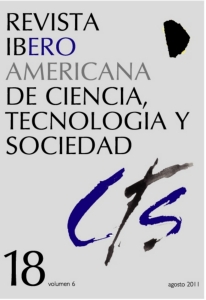Towards the ITCs Era
DOI:
https://doi.org/10.52712/issn.1850-0013-748Keywords:
numbers system, calculating devices, computer, ICTAbstract
It is shown that the human capacity to refer to quantities arises from cultural constructions and how these constructions lead to the concept of number and its representation. We tell how such constructions took place in some civilizations. We refer to the cardinal and ordinal approach, to positional number systems and their advantages and to the advanced number systems attained by the main American civilizations. Later, we present the development of devices for the automation of arithmetic operations and, finally, we show how imperious social needs lead to the development of digital computers and to the integration of them with communication technology, giving birth to the age of ICT.
Downloads
References
Dantzig, T. (1947): Número: El Lenguaje de la Ciencia, Argentina, Librería del Colegio.
Sierpinski, W. (1958): Ordinal and Cardinal Numbers, Naukowe, Panstwowe Wydawn.
Rey Pastor, J., PI Calleja, P. y Trejo, C. A. (1961): Análisis Matemático, Volúmen I, Buenos Aires, Editorial Kapelusz.
Boixados, R. E. y Palermo, M. A. (2000): Los Mayas, Buenos Aires, Libros del Quirquincho.
Boixados, R. E., Palermo, M. A. y Rojas, O. (1999): Los Aztecas, Buenos Aires, Libros del Quirquincho.
Chaitin, G. (2005): METHA MATH. The Quest for Omega, Nueva York, Pantheon Books.
Ceruzzi, P. E. (2003): A History of Modern Computing, Cambridge, Massachusetts, The MIT Press.
Downloads
Published
How to Cite
Issue
Section
License
Copyright (c) 2024 CC Attribution 4.0

This work is licensed under a Creative Commons Attribution 4.0 International License.
All CTS's issues and academic articles are under a CC-BY license.
Since 2007, CTS has provided open and free access to all its contents, including the complete archive of its quarterly edition and the different products presented in its electronic platform. This decision is based on the belief that offering free access to published materials helps to build a greater and better exchange of knowledge.
In turn, for the quarterly edition, CTS allows institutional and thematic repositories, as well as personal web pages, to self-archive articles in their post-print or editorial version, immediately after the publication of the final version of each issue and under the condition that a link to the original source will be incorporated into the self-archive.











